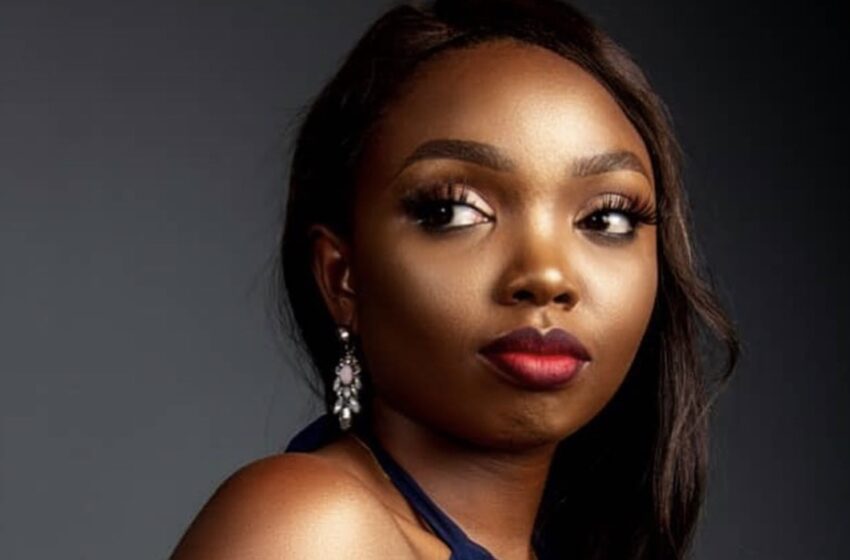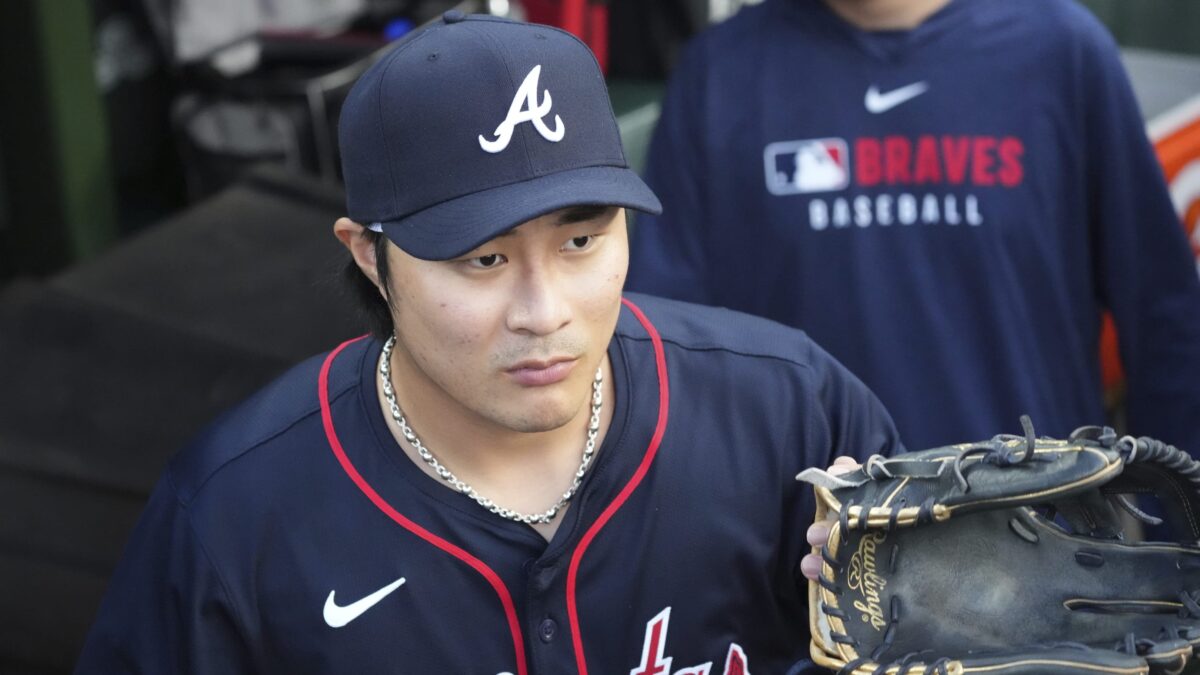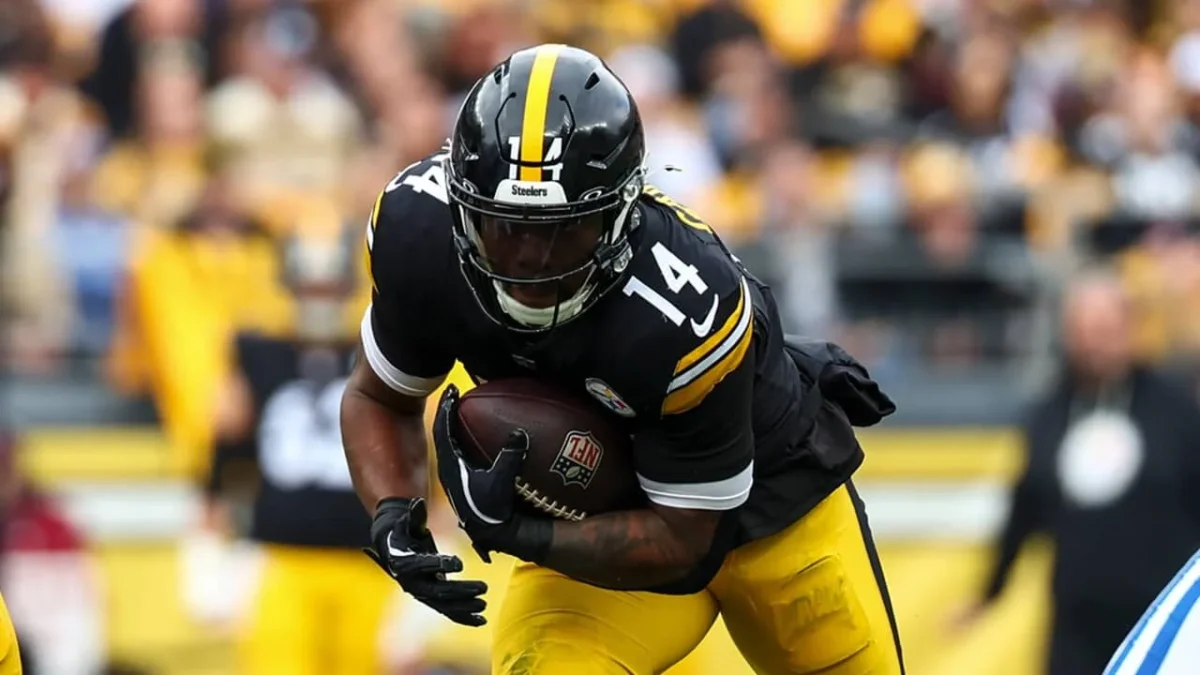INTERVIEW: “I don’t regret leaving law for art” — Lola speaks on longest painting marathon record attempt

Stepping into the world of art with unyielding determination, Lola Mewu in October undertook an audacious quest: to set a new benchmark in artistic endurance by attempting the Guinness World Record for the longest painting marathon.
Her brushes danced tirelessly across the canvas for 82 hours, weaving a story of resilience, creativity, and an unshakable commitment to her craft.
Join CrispNG as we uncover the vibrant mosaic of her journey and the myriad of emotions and events that colored this record-breaking endeavor. She talks of her switch from law to art, her 12-hour stretch painting and 62-day painting challenge in preparation for the attempt among others.
Can we meet you?
My name is Oyinlola Odemewu. I am a visual artist from Nigeria. I’m from Ogun State, and I grew up in Lagos but moved to Ibadan last year. I studied law at UNILAG, went to law school, and practiced for a while before switching to visual artistry as a career.
What made you switch careers from law to visual art?
Art is something that I love doing; law is something that I learned. I’m still learning art, but it feels inborn to me. I’ve always been someone who loved sketching even as a child, so transitioning to a visual art career wasn’t too hard for me. As for law, I would say maybe it’s due to the situation of the country and the fact that lawyers are not paid so well, which is very discouraging for a lot of people. Most lawyers have side hustles, so I decided to stick to my side hustle since it’s profitable.
Was there any backlash from your loved ones following your decision to become an artist?
Not exactly. My parents are very supportive of anything that you do, so long as you know what you are doing. It wasn’t hard convincing anyone about my artistry career. Growing up, it’s always been something that I did. At that point, makeup was just kicking off in Nigeria, and I learned it seeing that it paid, and I was able to get a bit of independence. So, it’s not very hard to convince someone that it’s something that pays. When I decided to switch to art last year, it was hard because I’m strong-willed and I don’t get discouraged easily.
What was your motivation for attempting GWR for the longest painting marathon?
My motivation came from all the women who have attempted this in the past: Kaffy, Pinky Debby, and Hilda Baci. However, it was Hilda Bassey’s attempt that gave me the inspiration to take on the challenge.
READ ALSO: Meet Lola Mewu, the artist chasing Guinness World Record for longest painting marathon
How have things changed for you since the attempt?
It still feels the same for me, but certain things have changed, and I’m grateful for what I’ve gained from the challenge. Before now, I hadn’t sold any of my traditional artworks. During the attempt, I created 29 works, and I was able to sell 20. That alone is a great achievement; it means that people resonate with what I did and that they want to partake in my success story. That’s the little that I’ve gained from that, and I’m grateful for it.
Why did you choose that line of artwork you created for the GWR attempt?
While I was practicing for the attempt, I tried to create things that people could easily relate to. For me, you shouldn’t be producing art pieces that require an explanation afterward and I wanted to avoid that.
I aimed for something that even with a description attached, people wouldn’t necessarily need to read it. I wanted it to be something they could resonate with and relate to, knowing they’ve experienced something similar in their lives and therefore wouldn’t require the artist to explain.
What significance does the GWR attempt hold for you?
I aimed to place the Nigerian art world on the global map. I’m on the Web 3 NFT space and I know how challenging it is to communicate with people from other parts of the world. When you mention you’re Nigerian to collectors, they often perceive you as a scammer or attach other undignified stereotypes. I want to create a narrative highlighting the exceptional talent of Nigerian artists.
However, I’m aware of prominent artists making waves worldwide, even in traditional art spaces.
Could you describe the preparation and planning involved in the GWR attempt?
Before I applied, I was mentally and physically preparing myself for that kind of challenge. When I started pushing myself, I didn’t know I would attempt it this year or that Hilda would attempt it when I began focusing on traditional art again last November.
I aimed to improve and maintain consistency in my craft. I dedicated long hours—painting continuously for 12 hours or more, sometimes working on multiple pieces a day.
This routine was already part of my digital art journey; I completed a 62-day challenge last year, producing 1 or 2 artworks daily.
When I saw Hilda’s attempt, I felt ready to do it as I was already in that mental and physical space. Training myself wasn’t difficult as I was already prepared.
I began inquiring with the Guinness World Records about the requirements for the marathon. I learnt I had to paint directly, which was different from how many artists paint, usually sketching with pencils first and then painting afterward.
This forced me to relearn how to sketch solely with my brush, presenting a unique challenge. I familiarized myself more with my brushes, practiced yoga to prepare for the mental and physical exertion, and took long evening walks to further ready myself.

What challenges did you face before and during the attempt?
Getting sponsors was the major challenge—very difficult indeed. Despite reaching out to numerous sponsors, receiving responses barely received responses, and even when we did, they often halted communication midway. Our planning began in June, letters were sent, and companies were approached, but by September, no sponsor funds had materialized. Realizing the financial burden would fall on me, I started seeking support from family and friends, and they were the ones who ultimately came through for me. Another hurdle we encountered was securing a venue. Although we secured one early on, a miscommunication led to delays, forcing us to change the venue three times before settling on the last one just two to three days before the event.
Are there any particular artists or movements that influence your work?
Not exactly. There are times when you see works of other artists or references that stick in your mind, but I can’t pinpoint and say I derived it from this particular place.
Most of my references don’t even come from the online space like Pinterest. They usually stem from what I see in my environment or what I experienced while growing up. That’s why most of the things I create are relatable to everybody.
Is there a particular art piece that holds a special place in your heart and why?
I have numerous works that I really like, and having created 29 artworks for the event, it is challenging to choose a favourite. Before the event, two works stood out for me: ‘Boda Wasiu’ and ‘Iyale Okan.’ ‘Boda Wasiu’ was my first large-sized artwork, and I’m always fascinated when I look at it. Additionally, it was a collaboration, incorporating jean material on the character, which was something new and exciting for me. I was very fond of this work.
‘Iyale Okan’ was crucial in forming my collection for the Guinness World Record attempt. It was the second piece I created while practicing, and I liked it because of the engagement it received online. Even before then, I was captivated by the piece.
From the event collection, I love ‘Eko for show’ and ‘Ejire ara isokun.’ ‘Eko for show’ was reminiscent of something I had previously painted, serving as a reference for the event. Growing up in Lagos, the yellow bus was a prominent part of my experience, and I wanted something that resonated with the essence of Lagos. As for ‘Ejire ara Isokun,’ my affection for twins inspired the piece.

What’s the update on the confirmation from Guinness World Record?
It takes about 12 weeks to receive confirmation, so we are still waiting.
Are there plans for future attempts or related endeavours?
For now, I can’t say what challenge I’ll take on next until I receive my certificate. Besides the Guinness World Record, I have other plans. I aim to hold a solo exhibition and organize initiatives for the art community, especially in Ibadan.
Although we initiated something earlier this year, we’ll be unveiling more in the coming year. I also have a project for young children between the ages of 12 to 16 in secondary schools who are interested in art.
Looking back, do you regret leaving law for art?
I don’t regret it. The financial stability I achieved through art wouldn’t have been possible if I were still practicing law.
During my service year, I worked in a ministry where we were paid 4000 naira per month, and at some point, these payments ceased. After finishing my service in 2017, I didn’t secure a job until November 2018, and it was unpaid, the reason being that I was “gaining experience”.
I commuted to work by driving or taking a bus, my expenses were covered by the money I earned from doing makeup. At times, I still had to ask my parents for financial support.
READ ALSO: $16,000, other benefits… media fellowships, opportunities you should apply for before 2024
In 2018, I didn’t continue with that job; instead, I continued my makeup business until I secured another job in January 2019, earning 40,000. I worked till June before leaving. Because I wasn’t handling substantial tasks, I found it mentally draining. It felt like going to work daily, sitting down, and collecting 40,000 naira at the month’s end. While I may not have a strong desire to practice law, I hoped to at least learn something, but didn’t get the opportunity.
After all these experiences, I decided to stick with art, and it has proven rewarding both financially and in other aspects.
Do you encourage people to study law, looking at your experience?
Of course, I do. Everyone knows best how to live their lives. I have colleagues and friends from university who are doing very well; some work in big law firms.
We all have different dreams and aspirations for ourselves. If I don’t see myself in that line, I won’t force myself to do what I don’t like. You can practice law, but if it’s not your dream, you might do it for your parents and pursue your aspirations afterward. However, I prefer going after what you want right from the start.
What advice would you give to young artists?
I always tell them, ‘Just do it,’ because you never know what might propel you forward. Keep creating. I understand money is crucial; you need materials to paint with. But don’t let the lack of sales or immediate rewards discourage you. Put yourself out there, and become part of a community.
If you’re in Ibadan, you can join our Daily Bread Art Community. Being part of such communities can open doors for you. Our first exhibition was a group exhibition, which was also my debut. Join group exhibitions, broaden your horizons.









Is James Woods right about Gavin Newsom?...
December 16, 2025